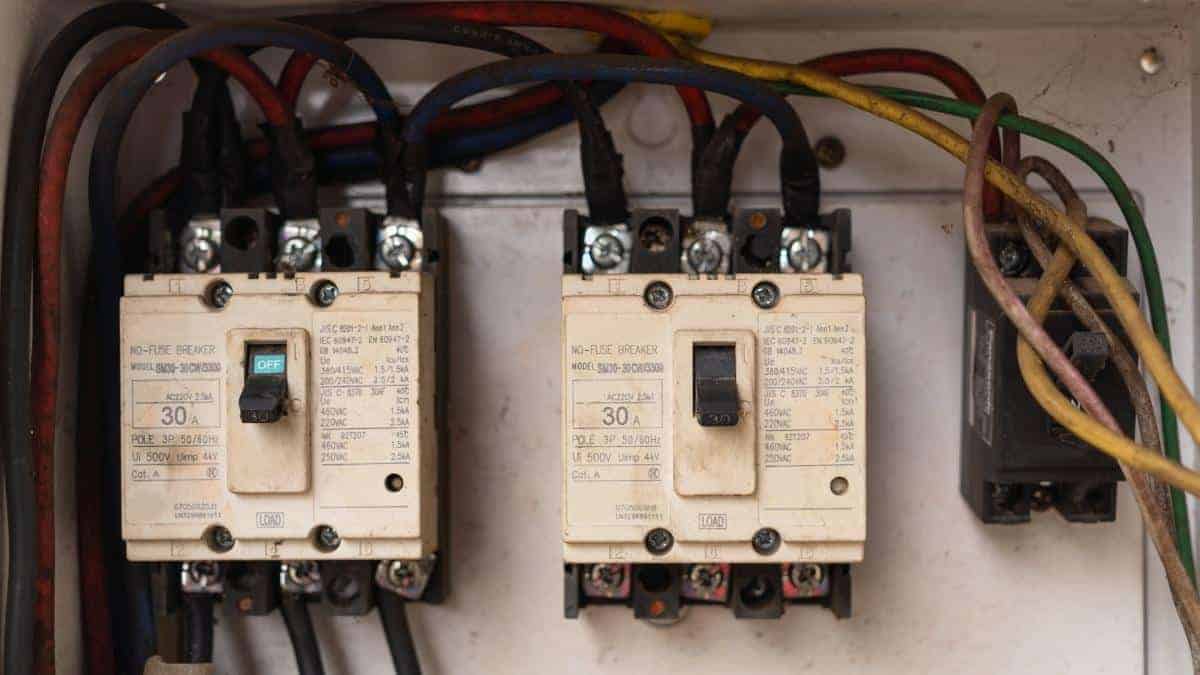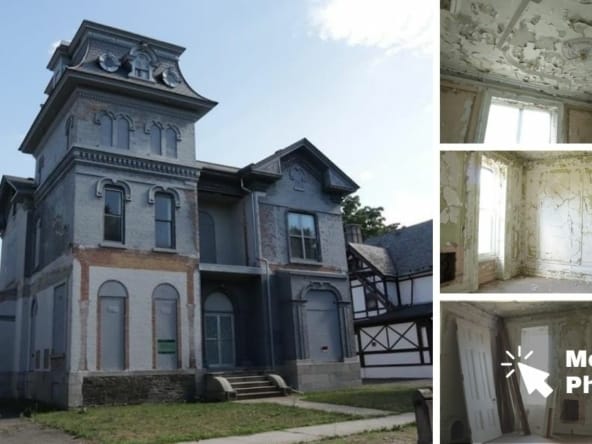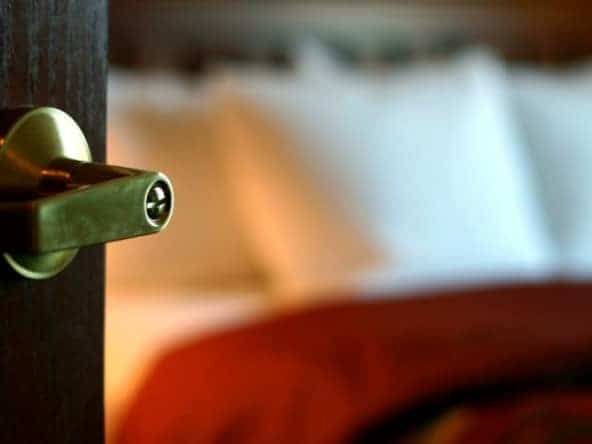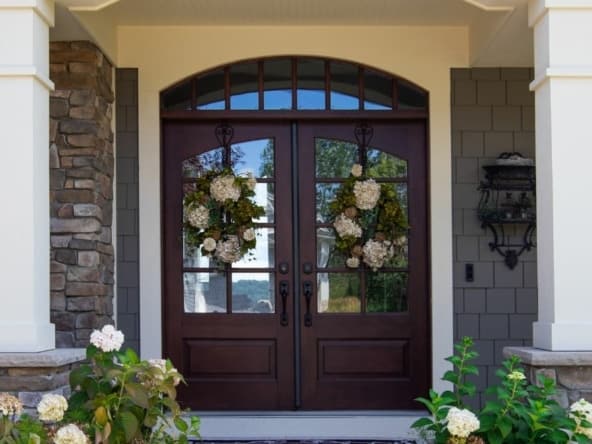Old homes are full of charm and history.
However, with history, there can sometimes come building issues. Some of these problems can be easy fixes, but others may stop you from buying the house entirely.
The exact issues you should look out for depending on your geographic area and the build date of the house. Plus, the level of maintenance put forth by previous owners makes a big difference.
There are some general issues for which you can keep an eye out. Here are 9 things you should look at when buying an old house.
1. Electrical in Need of Updating
No matter how old an old house is, if it was built before the 21st century, it is likely that the electrical can not handle the amount of electricity we use now with large TVs, computers, chargers, and more. So, you will likely need to update the electrical system if needed.
In old houses, it is common for the original electricity to not be up to modern standards. The original electrician may have been a bit too creative with electrical standards. Certain electrical set-ups, such as a knob or tube wiring, may also make it difficult for you to get homeowners insurance or a mortgage.
Look for red flags like ungrounded outlets, flickering lights, dim lights, recurring power outages, warm outlets, and switches. A certified inspector should be able to find any issues.
2. Plumbing Concerns
Plumbing, while essential, can cause plenty of problems. Old pipes can contain lead, which leeches into the drinking water and cause health problems. If you think you have lead pipes, replacing them can cost between $2,500 and $15,000.
Bleach and other cleaning materials can corrode polybutylene pipes. So, if those are in your old home, you may need to replace them.
Roots from large trees can also affect plumbing in an old home. When looking at an old home, you should look for any large trees outside the house. Willows, in particular, are potentially quite harmful to your plumbing.
On your house tour, look for warning signs, such as low water pressure, poor drainage in sinks and tubs, and leaks under faucets. You should also always have a professional look at your plumbing.
3. Radon and Other Gases
Radon is a gas that can cause lung cancer after prolonged contact. It can come from uranium in the soil on your property. A quick test is all you need to determine if radon is present or not. If it is around, you can mitigate the gas for close to $2,000.
The other major gaseous threat is carbon monoxide. It can leak through your stove, oven, dryer, or HVAC system. The presence of this gas can lead to headaches and eventual death.
Stay safe by having carbon monoxide detectors throughout your home. Issues with harmful gasses can also happen from cracks in the foundation.
4. Lead, Asbestos, and Other Harmful Materials
Unfortunately, homes built before 1978 very likely have harmful materials. Asbestos and lead are the two most common bad materials in homes.
Lead can cause neurological damage to adults and especially children. Before people knew its issues, it used to be a common material in paint and pipes. You can remove the material with professional services. Getting rid of lead will cost around $3,000 or more for the average home.
Asbestos can cause a plethora of respiratory issues, including lung cancer. Back in the day, it was a frequent substance used in insulation in siding, walls, pipes, and crawl spaces.
Professionals can remove asbestos from those areas. However, it can also be ok to be around if left undisturbed. Asbestos removal can cost close to $2,000. However, a big job can be between $15,000 and $30,000!
It is difficult to visually assess the presence of lead and asbestos. Sometimes cracked paint or crumbling drywall and siding indicates the presence of such substances. In these cases, finding a professional inspector to check out a home before you make the final decision can be a real-time saver.
However, you will often need to rely on information about a house. Learn when the house was built, and find out if there is any information about the presence of lead and asbestos in records.
5. Foundation Issues
Problems with the foundation of an old home are frustrating and, unfortunately, common. These issues range in terms of severity. Sometimes they are only small cracks, but other times your support footings may experience damage.
While you should prioritize more major issues, you should take care of the small problems before they expand.
They can come from regular age and wear and tear. However, foundation problems can also result from various climates. Fixing these issues is vital if you want to prevent damage to the rest of your home.
Foundation issues can come from soil composition, tree roots, and seismic activity. When assessing a potential home, look for cracks in walls, uneven floors, and problems with doors and windows.
Repairing this problem can cost you at least $5,000. However, it can cost much more if the issue is more severe. Have a professional assess the foundation of a potential domicile so you know how much repairs will cost.
6. Roof Problems
The rest of the house will quickly follow if your roof is in bad shape. Several different factors can affect the longevity of your roof. When gathering information about the roof, find out about its materials, weather exposure, when the roof was last replaced, and how previous owners maintained it.
When assessing the roof’s health, look for any missing shingles, moisture on the inside of the house near the ceiling, and the state of the gutters. If you notice any of these issues, you will likely need to replace the roof soon.
Roofs come in many materials, including asphalt, slate, rubber slate, clay, concrete, metal, stone-coated steel, solar tiles, plants, and built-up roofing. The right choice will depend on the building, your climate, budget, and how frequently you want to replace it.
Depending on your type of roof, a new roof can cost between $6,000 and $45,000. The average cost is $8,000 for a roof.
7. Units in Need of Replacement
There are plenty of vital units in the home that eventually need replacement. These units include furnaces, boilers, air-conditioning units, and water heaters. Find out your home’s options, and ask for records of when the units were most recently updated.
Water heaters last for around ten years, boilers can live for nearly 20 years, furnaces last for between 15 and 30 years, and air conditioners last for around 10 years. Many of these items cost a few thousand dollars, and a water heater costs between $200 and $1,500.
As you are touring a potential home, look for signs of problems with such units. These signs include noisy units, puddling around the water heater, humidity, and uneven heating.
8. Energy Waste
One of the major drawbacks of old houses is that they are not particularly energy efficient. From large, drafty windows to a lack of insulation, there are many reasons an old house can leech your heat, air conditioning, and money.
There are a few clear indications that your house lacks energy efficiency. Look for drafts around the edges of windows and doors and condensation between layers of glass windows. Try opening and closing windows and doors. If this is a struggle, they may not be energy efficient.
Luckily, there are several solutions for these issues, and they are not all expensive. You can weather-proof the house each year for very little money. That will not solve the problem entirely, but it will make a difference.
You can also invest in storm windows, or install modern energy-efficient windows. Such windows may cost around $450 each. You can also get blown-in insulation as a way to improve energy efficiency.
9. Cosmetic Concerns
While cosmetic issues such as a less than desirable layout or out-of-date finishes may pale in comparison to safety issues, it is vital not to let focus on safety because you to get a house of which you do not like the look.
Older homes usually do not boast modern buildings’ open spaces and large kitchens. Instead, you may find smaller rooms, odd floor plans, and partially finished updates. Luckily, you may be able to change all of these issues.
However, such changes can be expensive. A full remodel can be around $50,000, depending on the type of home. When looking at a home, keep an eye out for areas that need updates and try to learn about any load-bearing walls that you would not be able to change.
Final Thoughts
When you buy an old house, you buy a piece of history. However, if you want a historical house that makes a cozy home, you must be vigilant and learn about any potential issues.
Before finalizing the sale, it is a good idea to know how much you would need to pay for any changes.





